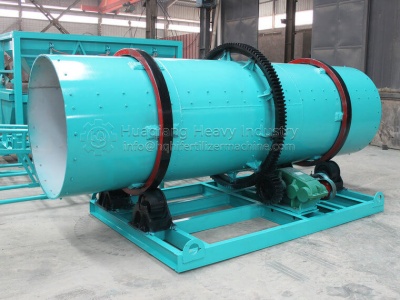The Rotary Drum Granulator is a key equipment in the fields of fertilizer, feed, chemical industry, etc. Its operating efficiency directly affects production capacity and cost, so correct operation is very important to improve production efficiency. If you want to operate the Rotary Drum Granulator correctly to improve pellet production efficiency, you can refer to the following aspects:
Pre-operation inspection
Carefully check the drum body of the Rotary Drum Granulator to ensure that its structure is intact, without cracks or deformation. Check the transmission device, such as pulleys, chains, etc., to ensure that the connection is tight and there is no excessive wear. Check the supporting structure, including the bearing seat, etc., to confirm its firmness to prevent shaking during operation.
Key points of operating parameters
- Speed: The speed of the drum should be set according to the properties of the material and the specifications of the granulation. Generally speaking, for materials with softer texture and greater viscosity, the speed can be appropriately reduced, such as 10-15 rpm; for materials with harder texture and less viscosity, the speed can be increased to 15-20 rpm.
- Filling rate: It is recommended to control it at 20%-30% of the drum volume to ensure that the material is fully tumbled into granules.
- Feed control: Uniform feeding is the key. The appropriate feed speed should be determined according to the volume and production capacity of the drum. At the same time, attention should be paid to the continuity of the feed to avoid intermittent feeding affecting the stability of granulation.
- Temperature and humidity adjustment: Real-time monitoring of the temperature and humidity in the drum. If the temperature is too high, it may cause the moisture of the material to evaporate too quickly, which will lead to granulation failure. When the humidity is insufficient, appropriate spraying can be used to increase the humidity.

Material preparation
Ensure that the particle size of the material meets the requirements. Particles that are too large or too small may affect the granulation effect. You can crush the material in advance. At the same time, the humidity of the material must be strictly controlled. Too wet will easily cause adhesion, and too dry will make it difficult to form. The moisture content of the material is recommended to be 8%-12%, which can be fine-tuned by drying or spraying.
Regular maintenance
After each production, clean up the remaining materials in the drum in time to prevent the materials from drying on the inner wall of the drum and affecting the next production. At the same time, regularly check the vulnerable parts, such as the stirring paddle, the discharge port, etc., and replace them in time if they are worn, so as to prepare for the next start-up.
I believe that through full-process management such as parameter optimization, raw material pretreatment, and scientific maintenance, enterprises can significantly improve the particle production efficiency of the Rotary Drum Granulator, and ultimately achieve the goals of high efficiency and high quality in the production process.

